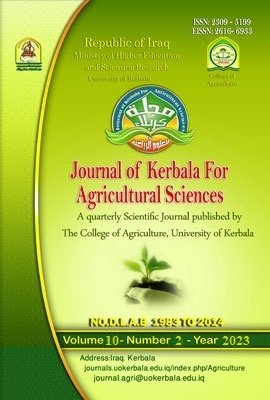Histopathological effectiveness of vitex agnus castus in treating polycystic ovaries induced by letrozole in female rabbits
DOI:
https://doi.org/10.59658/jkas.v10i2.1183Keywords:
Vitex agnus-castus, polycystic Ovaries, clomiphene citrateAbstract
Female fertility is significantly impact by the common endocrine health issue known as polycystic ovarian syndrome (PCOS) in the childbearing years, Due to their ease of use and reduced cost-effectiveness when compared to chemical medicines generated via synthesis, therapeutic wild plants and herbs have been prized agents in the management of different illnesses for ages. Premenstrual syndrome, mastalgia, infertility, and menstrual cycle control are among the numerous conditions and diseases that can be treated with Vitex agnus-castus, a well-known medicinal plant that is native to the Mediterranean region and is widely used in Europe, Asia, and North Africa. The purpose of the study is to learn more about Vitex agnus catus and evaluate its efficacy in treating polycystic ovaries induced by letrozole in comparison to clomiphene citrate therapy. Since the effects of herbal activity are assessed by, observing histopathological changes in rabbit ovaries. The incidence of subcapsular ovarian cysts, capsular thickness, incomplete luteinization, and the quantity of corpora lutea were all higher in the research groups' ovaries. Compared to the group with a positive control (treated with normal saline only and administered orally). Histopathological study of the rabbit ovaries for both treatment groups revealed hyperplasia of the surface epithelium and congested blood vessels of the ovaries.
Downloads
Published
How to Cite
Issue
Section
License
Copyright (c) 2023 Copyright (c) 2024 is the Author's article. Published by the Journal of Kerbala for Agricultural Sciences under a CC BY 4.0 license

This work is licensed under a Creative Commons Attribution 4.0 International License.
Licensing Terms
All articles are published under a Creative Commons License and will be directed to the Creative Commons Attribution 4.0 International License (CC BY 4.0) That permits use, distribution, and reproduction in any medium, provided the original work is properly cited. This license also allows the work to be used for commercial purposes.
Use by both non-commercial and commercial users
This content is licensed under a Creative Commons Attribution 4.0 International (CC BY 4.0) license, permitting use by both non-commercial and commercial users. Individual users may access, download, copy, display, and redistribute the articles to colleagues, as well as adapt, translate, and text- and data-mine the content, subject to the following conditions:
- The author's moral rights, including the right of attribution and the right to protect their work from derogatory treatment, are respected.
- Where content in the article is identified as belonging to a third party, users must ensure that any reuse complies with the copyright policies of the owner of that content.
- If the article content is reused for research or educational purposes, users should maintain a link to the appropriate bibliographic citation, including the DOI and a link to the published version on the journal's website.






